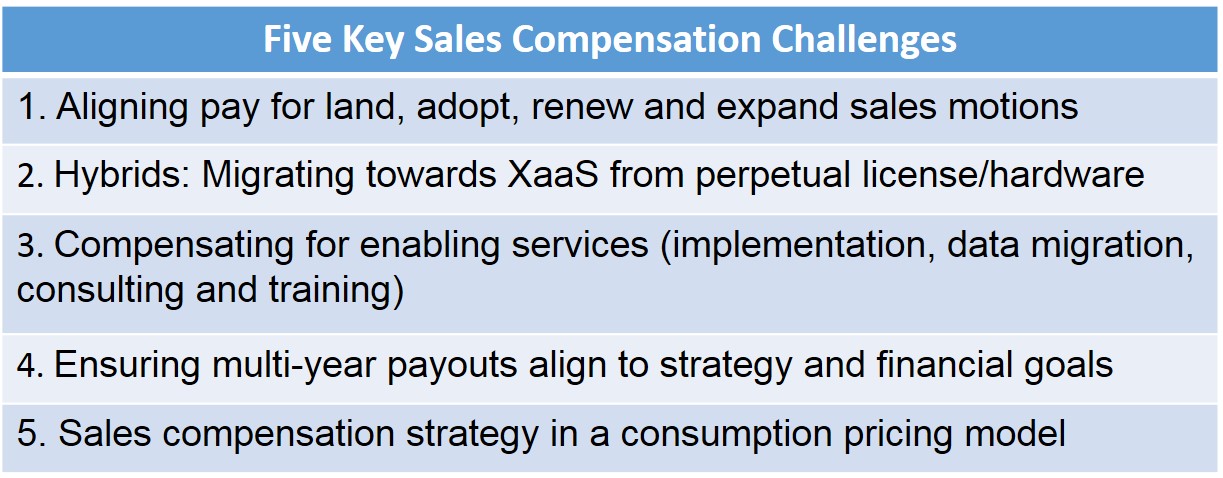Five Key Technology and XaaS Sales Compensation Challenges
Sales leaders responsible for go-to-customer strategy within the technology industry have much to contend with today. Market and product portfolio changes are happening a mile a minute. Buyers are changing, companies are merging/splitting, product roadmaps are evolving and customers are leveraging the information age to become more knowledgeable about their needs and vendor solutions. Sales compensation is a key lever in driving performance within this rapidly changing environment. However, designing the right sales compensation plans in this complex tech world is full of challenges. This article identifies five key go-to-customer challenges.
1. Aligning pay for land, adopt, renew and expand sales motions
XaaS companies are responsible for four key sales motions–landing new customers, ensuring the customers adopt the solution and recognize value immediately, renewing the customer’s business through a renewal contract or ongoing payment, and expanding their opportunity via upsell and cross-sell opportunities. These sales motions are four different measures, each with its own level of strategic focus and effort. Even if different roles own different sales motions, leaders must make critical decisions on how best to drive focus while keeping the plan simple.
2. Hybrids: Migrating towards XaaS from perpetual license/hardware
Most traditional perpetual license and hardware companies are migrating towards XaaS solutions. XaaS solutions typically provide less quota credit than the traditional solution, causing misaligned seller focus. Typical solution options include measures, crediting rules, value adjustments and hurdles. However, leaders get stuck with no clear migration strategy, varied migration strategies by product and keeping the plan simple.
3. Compensating for enabling services (implementation, data migration, consulting and training)
Most companies are in the business of selling a solution. To ensure the solution is deployed and used correctly, companies offer implementation services, data migration, professional consulting contracts and training. Most organizations realize lower margins for these solutions and leverage partners to provide them. Leaders must determine how much sales compensation emphasis to put on these services for each sales role.
4. Ensuring multi-year payouts align to strategy and financial goals
Any ongoing service, like maintenance contracts for perpetual licenses, break and fix service contracts, or XaaS solutions, typically include a term length. Here’s the conundrum–is a three-year 100k deal worth the same as three separate 100k deals, each with its own lifetime value? Typically, no. It is difficult to accurately set total contract value quotas when term lengths vary. Leaders must select the right measure(s), crediting rule(s) and mechanic(s) to align payouts with their multi-year strategy in a cost-efficient manner.
5. Sales compensation strategy in a consumption pricing model
Best-in-class sales compensation plans follow the “pay for persuasion” principle, where the plan pays for closing a contract via a bookings or billings event. Persuasion events vary in a consumption pay-as-you-go pricing model: first at the time of contract close, then as the customer uses/pays for the offering into the future. Leaders must figure out the right measure, crediting event and time duration.
These five key challenges will vary by company depending on their product portfolio, coverage model and job roles. Best-in-class companies assemble multi-functional design teams to tease out the applicable options and decide on the simplest plan that drives their strategy. Additionally, these same companies often seek the help of the Alexander Group to help design and adopt the right solutions.
Is your company wresting with any of these challenges? If so, contact us for a briefing to discuss approach, benchmarks and winning solutions.
Read more about Alexander Group’s perspective on sales compensation issues.

